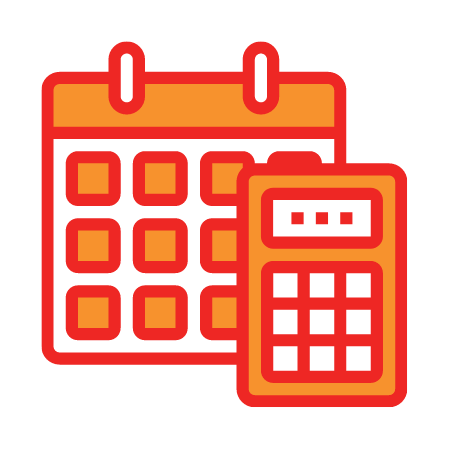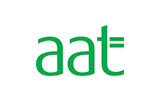If you’re looking forward to a guide on how to set up a director’s loan account, Here’s a quick guide.
It’s important to remember that companies hold different legal entities quite unlike directors. Shareholders need personal funds/assets distinguished from funds/assets that belong to specific companies. If you are managing a company, you need to learn how to deal with a Director’s Loan Account.
That’s what we will do in this comprehensive blog. We will look at what a Director’s Loan Account (DLA) is and how can you record it. Then we will look at its two types and how they are recorded. Let’s begin!
If you are looking for a reliable accounting partner, contact us!
What is a Director’s Loan Account?
A Director’s Loan Account is a record of money that a company director can borrown or lend to the compaby. The account is sperated from the main accuont of the company. It is used to track the flow of money between the director and the company.
It has two main types:
- Credit Director’s Loan Account
- Overdrawn Director’s Loan Account
Figure Out the Loan Accounts Both ways
Director’s loan accounts can be a simple way for both companies. Moreover, directors get funding without the need to involve a third party. It is important to understand the consequences and effects of any transactions undertaken by an overdrawn director’s loan account. It is also important that all transactions are recorded when undertaken and that directors. Moreover, their companies are aware of the running balance at all times.
What are Credit Balances?
In net terms, a director has introduced funds to a company. So that the business owes money to that manager. The implications are usually straightforward. Interest may be charged by the director to the company. If desired, at a reasonable rate (perhaps currently up to about 6% p.a.). Any interest payments made must be subject to a source 20 per cent tax deduction.
For any higher rate of liability earned from the self-assessment tax return of the owner. Interest is paid to directors, whilst taxable. Can be a useful form of profit extraction as no liability to National Insurance arises. The director, of course, needs to appreciate the recoverability of the amount. Due to him/her may be an issue if the company were to fail. A failure to recover a loan to a (trading) company by a director/shareholder will, for tax purposes. Only gives rise to a capital loss. (and as such will only be available for relief against capital gains. Rather than the much more valuable relief against income tax available in respect of some other types of loss).
Debit/Overdrawn Balances
Loans to directors/overdrawn balances wherein net terms. That, the director/shareholder has withdrawn more funds. To which he/she is entitled results in a debit or overdrawn balance. Speaking of any such arrangement (where the overdrawn directors loan account balance is £10,000 or more) should approve the shareholders in the company to follow the requirements of the Companies Act 2006.
In fact, overdrawn balances (at any level) have to be reported in the annual statements of the company. When the balance is overdrawn. Then the director/shareholder is obligated to repay the balance at some point. Either by introducing funds to the company or from credits which will be due from the company (e.g. dividends) to the director at some point in the future. Difficulties can arise where future credits are anticipated but do not materialize. Often as a result of the failure of the company.
In spite of the above, it would be very simple for a director/shareholder in a private company. To arrange for profits to be extracted from the company by way of a long-term loan. So, there is no immediate income tax responsibility on a bonus to a director or a dividend to a shareholder. To counter this Section 455 Corporation Tax Act 2010 imposes a tax liability on the company.
If at the end of an accounting period. There is a loan outstanding to an individual. Who is a participator ( a shareholder)? The tax due is equal to one-quarter of the size of the loan at the end of the accounting period. Payable to HM Revenue & Customs on the normal corporation tax due date. That is to say nine months after the end of the accounting period. Unless the company complies with the quarterly instalments scheme). The tax due is a stand-alone liability but can be mitigated in one of two ways:
Ways
- If the loan is repaid in full before the normal corporation tax due date. i.e. nine months after the end of the accounting period. then the tax involved does not have to be paid. However, the liability should be declared on the company’s corporation tax CT600 return. Equal relief also claimed to reduce the amount due to nil. If the loan is repaid in part within the relevant nine-month period then pro-rata relief grant.
- If tax is paid and the loan is repaid in whole or in part after the nine-month point the accounting period ends. Then such tax as relates to the loan repaid is a refund to the company. So, it is important to note that in these circumstances. The tax is not repayable until nine months after the accounting period in which the loan is repaid. Once Section 455 tax has a paid it can take a considerable amount of time for it to be repaid. Even after the underlying loans have been repaid to the company.
An Important Note
An overdrawn director’s loan account balance can also give rise to tax charges under Section 175 ITEPA 2003 relative to the benefit-in-kind of having a cheap (i.e. currently where the company charges less than 4% on any funds advanced) or interest-free loan. Small loans (i.e. those of £5,000 or less) are ignored for this purpose but (almost) all other loans must be disclosed and a benefit-in-kind calculated thereon (currently at a notional interest rate of 4%) and declared on form P11D. Failure to declare this benefit on form P11D is a common error and if identified via a PAYE audit or review of the company’s corporation tax return could well be the starting point for a wider investigation of the affairs of the company and its directors/shareholders.
As well as producing a personal income tax liability for the director the P11D entry produces a liability to Class 1A National Insurance for the company. (Note that the liability to personal income tax and company Class 1A national Insurance arises independently of the company liability under Section 455. A personal income tax liability and company Class 1A liability arises for each and every day there is an overdrawn director’s loan account balance and it continues until the loan is repaid. Unlike the Section 455 charge which is cancelled and refunded once the loan is repaid, the personal income tax charge and company Class 1A liability once incurred become a permanent cost).
Solution
One solution recommended is for the company to handle. The overdrawn balance of the loan account. To forgive the balance due, i.e. agree to write off the director’s loan account as some sort of bad debt. Such a course of action may be prohibited by the provisions of the Companies Act 2006. Especially when the firm does not have adequate income to cover the sum involved). This again may well cause difficulties if the company were to fail. The target of any such diagnosis is further treated. As if they received a dividend and the company refuses any corporate tax relief.
Furthermore, HM Revenue & Customs are likely to contend that Class 1. i.e. both employer and employee contributions) national insurance contributions are due since. The balance of a loan is forgiven for a director/shareholder, and income tax is payable. Both as if it were a dividend and an employment benefit-in-kind. The legislation dictates that, for tax purposes, the dividend charge takes precedence. So, this rule has no relevance to any charge for national insurance, which is likely to be pursued by HMRC on the basis that the release of the loan is earnings from employment.
HMRC‘s use of this strategy in Stewart Fraser Limited’s Tax Tribunal trial. What was released in January 2011?
I hope you find the above information useful. If you wish to discuss further then please do not hesitate to contact our Accountants in London.





















































